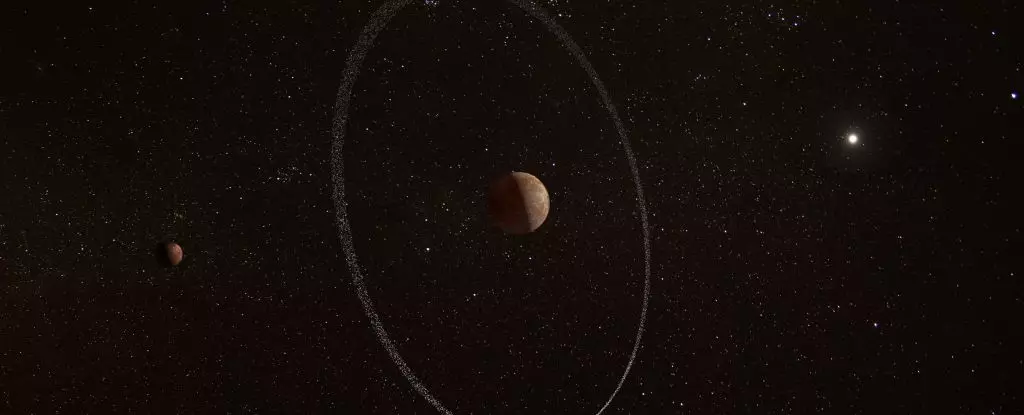When we look at the moons within our Solar System, we discover a vast array of peculiarities. We have moons that are hot, moons that are cold, moons with liquid, and moons that are dusty. There’s even a planet with a “walnut” moon and another with “potato” moons. However, out of the nearly 300 moons that have been identified, not a single one of them is a ringed moon. This fact in itself is quite bizarre, considering that half of the planets in our Solar System have rings of dust and ice encircling their equators. Even some dwarf planets and asteroids boast rings, yet not a single moon has been found with this characteristic.
Astrophysicist Mario Sucerquia and his team at the Adolfo Ibáñez University in Chile found themselves contemplating this unusual discrepancy. It was while exploring the possibility of ringed moons beyond our Solar System, referred to as cronomoons, that they began to ponder why moons within our own system do not exhibit this feature. The absence of rings around moons in the Solar System seemed counterintuitive, given the prevalence of rings elsewhere in space. This led the team to delve deeper into the underlying reasons that may be preventing ring formation or long-term stability around moons.
To investigate this enigma, Sucerquia and his colleagues turned to simulation tools to create models of cosmic systems and explore what happens when these systems are set into motion. With various raw materials available for ring formation around moons in our Solar System, such as debris from impacts or ejected vapor and gas, the researchers began conducting N-body simulations. They wanted to study how the gravitational interactions between moons, their host planets, and other celestial bodies could influence the formation and stability of rings.
The team’s simulations focused on mimicking the moons orbiting different bodies within our Solar System over a span of a million years. What they uncovered was unexpected. Despite initial expectations of ring instability, they found that in many cases, the structures were surprisingly stable. Even in environments with multiple moons and planets disrupting their gravitational fields, moons were able to maintain ring stability. Additionally, these chaotic environments enhanced the beauty of the rings by creating intricate structures like gaps and waves, reminiscent of Saturn’s iconic rings.
Remnants of the Past
Features on certain moons within our Solar System hint at the existence of past ring systems. Debris surrounding Saturn’s moon Rhea and the equatorial ridge on Iapetus suggest remnants of former ring structures. Sucerquia and his team propose that radiation pressure from the Sun, magnetic fields, internal heating, and other factors led to the disappearance of moon rings over time. The lack of observable rings around moons today could be attributed to the timing of our observations, missing these structures in their prime.
Looking Ahead
Moving forward, further simulations incorporating additional factors such as radiation pressure and magnetic fields could provide more insights into the absence of moon rings within our Solar System. Sucerquia recommends a more thorough examination of moons to search for evidence of past ring systems, similar to the ridge on Iapetus. Beyond our Solar System, the team is expanding their search for ringed moons around exoplanets. The mystery of the missing moon rings continues to intrigue researchers, sparking thoughts of the possible mythologies and cultures that could have emerged had our own Moon been adorned with rings.

